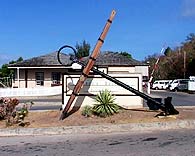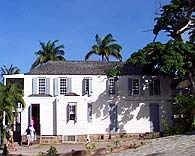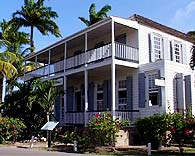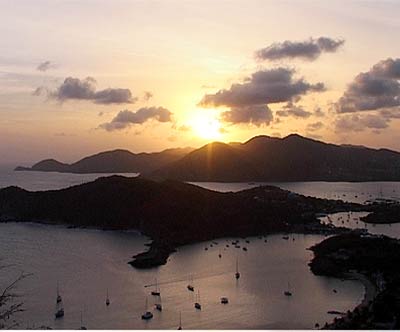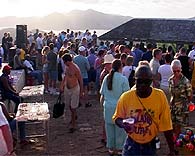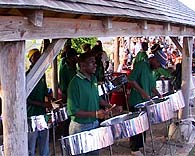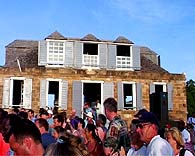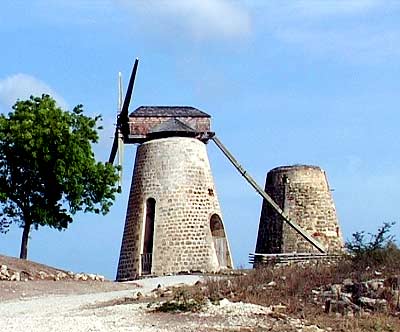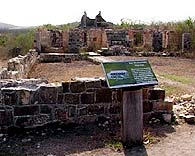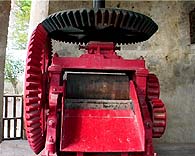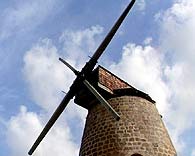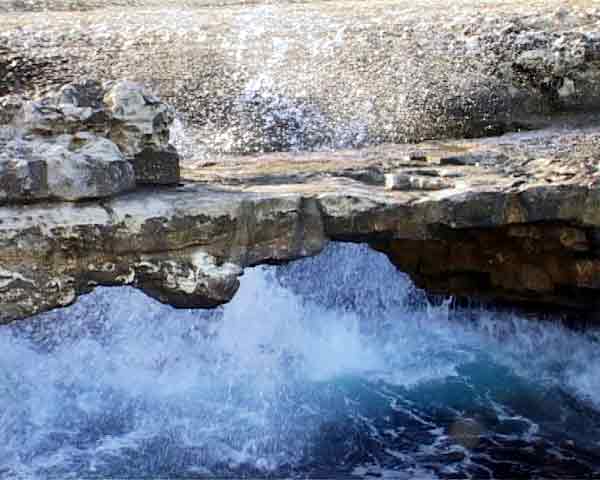|
MY ANTIGUA EXPLORING ANTIGUA |
|
Nelson's Dockyard in English Harbour - Abandoned by the Royal Navy in 1889 and restored in 1961, Nelson's Dockyard is a conglomeration of old stone warehouses, workshops and quarters now filled with souvenir shops, hotels, restaurants and a museum. With the yachts out in the harbour it still retains a nautical charm. Today Nelson's Dockyard has been completely restored, and it is now the only Georgian dockyard in the world. Underwater archaeology of the Harbour Dockyard Museum English Harbour, Antigua's graceful and evocative historic district, is focused on the fifteen square miles of Nelson's Dockyard National Park. Developed as a base for the British Navy in the great age of sail, the harbour served as the headquarters of the fleet of the Leeward Islands during the turbulent years of the late 18th century. Almost all of the park's other sites of interest overlook the harbour. The closest of these is Clarence House, a residence built for the future King William IV (1765-1837) when he served under Nelson as captain of the H.M.S. Pegasus.
St. John's - the capital and largest
city of Antigua and Barbuda, is dominated by the magnificently
evocative white baroque towers of St. John's Cathedral. Built in 1845,
the church is now in its third re-generation, as earthquakes in 1683 and
in 1745 destroyed the previous structures. The towers are the first
sight of Antigua for about half of the island's visitors each year, many
of whom arrive by boat. With its recently completed cruise ship dock and
several hotels, St. John's is a lively hub for shopping and dining.
In
1674 Sir Christopher Codrington was granted this estate by the English
Crown . Arriving from Barbados, convinced that sugar would be the most
important crop in the future, he named the estate after his daughter
Betty, and his "hope" was that he had made the right decision. Today,
the mill has been restored. The cane-crushing machinery is in working
order, and new wings and sails have been reconstructed to the original
specifications. A visitor centre has been created by converting a
former cotton house storeroom into a museum. This includes various
aspects of the plantation's history and shows early estate plans,
pictures and maps, artefacts and a model of the central site to giving
an overview of the of "Betty's Hope".. Other
insights include how sugar and rum were produced long ago. Admission is
by a USD2 per person. Like other large plantations, Betty's Hope
was an agricultural as well as an industrial enterprise, and employed a
large number of people. Supervised by a handful of European managers,
hundreds of Africans lived out their lives on this and similar
plantations, first as slaves, then as labourers after emancipation in
1834. Enduring the hardship of cultivating and processing the sugar
under exhausting conditions, they developed great skills as craftsmen,
boilers and distillers which gave Betty's Hope its reputation for
excellence lasting to this day Sea View Farm Village: Antiguan folk pottery dates back at least to the early 18th century, when slaves fashioned cooking vessels from local clay. Today, folk pottery is fashioned in a number of places around Antigua, but the centre of this cottage industry is Sea View Farm Village. The clay is collected from pits located nearby, and the wares are fired in an open fire under layers of green grass in the yards of the potters' houses. Folk pottery can be purchased at outlets in the village as well as at a number of stores around the island. Buyers should be aware that Antiguan folk pottery breaks rather easily in cold environments. Potworks Dam/Reservoir holds the largest artificial lake on Antigua, and is surrounded by an area of natural beauty. The dam holds a billion gallons of water and provides protection for Antigua in case of a drought. This expanse of freshwater is reputed to be the largest in the Eastern Caribbean. It is a mile long and half a mile wide, when full. |
|
|
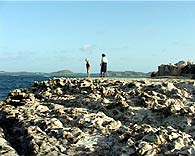 |
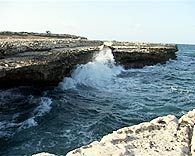 |
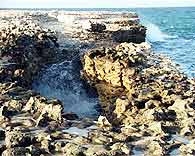 |
|
Indian Town
is one of Antigua's National Parks and is located at the
north-eastern end of the island. Over the centuries, Atlantic
breakers have lashed the rocks and carved a natural bridge known
as Devil's Bridge. The name Devil's Bridge comes from an old myth
foretelling of may mass suicides occurring among slaves in
despair. At their very end they would go there and toss themselves
over. Indian Town is surrounded by numerous blowholes spouting
surf, a very incredible sight indeed. One local legend is that if
you throw two eggs into the hole, the Devil will keep one and
throw back the other. |
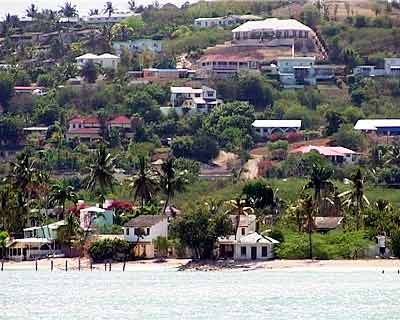 |
Harmony Hall: Harmony Hall, in
Brown's Bay at Nonsuch Bay, is the main base of the Antiguan arts
community. Exhibits change throughout the year, but the annual
highlights are the Antigua Artist's Exhibition and the Craft Fair,
both in November. The sugar mill tower around which Harmony Hall
is built has been converted to a bar and provides its patrons with
one of the island's best panoramic views, including a fine
prospect of Nonsuch Bay. |
|
 |
|
Dow's Hill Interpretation Centre is located just 2 ½ miles from the Dockyard. unique in the Caribbean, using multimedia presentations that cover six periods of the islands history, including the era of Amerindian hunters, the era of the British military, and the struggles connected with slavery. A belvedere opens onto a panoramic view of the park. Open daily from 9am to 5pm. Fig Tree Drive: Antigua's most picturesque drive meanders from the low central plain of the island up into the ancient volcanic hills of the Parish of Saint Mary in the island's southwest quarter. The none-too-smooth road passes through an area of lush vegetation and rainforest and rises to the steep farmlands around Fig Tree Hill (figs are what Antiguans call bananas) before descending to the coastline again. Along the way are banana, mango, and coconut groves, as well as a number of old sugar mills and pleasant little churches. |
 |
|
Green Castle Hill: The 'megaliths' that initially drew curious visitors to Green Castle Hill are almost certainly geologic features, but they are no less impressive and picturesque for being natural features. Green Castle Hill also provides an excellent view of the island's interior, including both the south-western volcanic mass (of which it is a part) and the interior plain. (due south of St. John's, btw. Jennings and Emanuel). Clarence House is located on a low hill overlooking Nelson's Dockyard. Built by English stonemasons to act as living quarters for Prince William Henry, later known as Duke of Clarence, the future king stayed here when he was in command of the Pegasus in 1787. At present it's the country home of the Governor of Antigua and Barbuda and is open to visitors when his Excellency is not in residence. A caretaker will show you on a little tour where you will see many various pieces of furniture on loan from the National Trust. Princess Margaret and Lord Snowdon stayed here on their honeymoon. Like to hear Caribbean music? Try the Caribbean yellow pages |
Why not visit one of our other Holiday destinations
ANTIGUA
BARBADOS
CORFU
CYPRUS
FLORIDA
GOSPORT
GRENADA
ST KITTS
ST LUCIA
TOBAGO
KENYA

